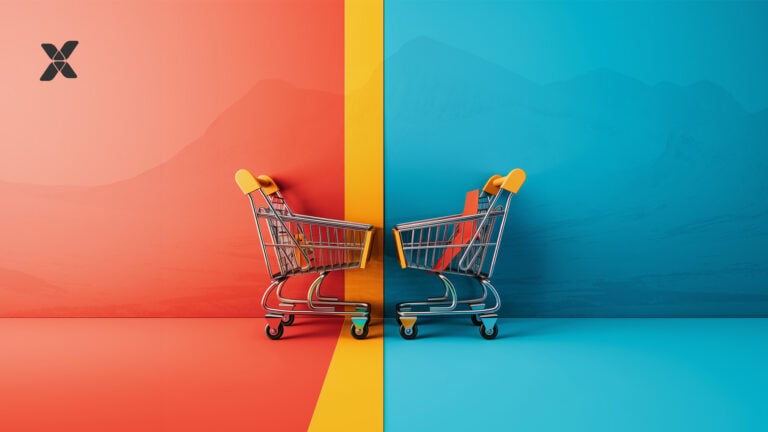Managing product data in food & beverage can feel like keeping plates spinning in a storm. One outdated allergen entry here, a mislabeled pack size there—and suddenly you’re dealing with compliance risks, delivery delays, or frustrated retail partners. In a supply chain where speed and accuracy are everything, even small errors can cascade into costly consequences.
If you’re spending too much time keeping proverbial plates in the air managing data issues instead of optimizing your operations, it’s time to rethink the way your product information flows.
That’s where the Global Data Synchronization Network (GDSN) comes in—a global framework built on GS1 global standards that brings order to the chaos by synchronizing your product data across systems, suppliers, and sales channels in real time.
In the food and beverage industry, accurate and timely product information is paramount. From regulatory compliance to customer expectations, the stakes for precise product data have never been higher. GDSN is a game-changer that allows for seamless sharing of standardized product content across the entire supply chain. At Vaimo, we specialize in integrating such digital solutions to help businesses like yours achieve operational excellence through scalable, future-ready ecosystems.
In this guide, you’ll discover:
- What GDSN is and why it’s relevant to the food and beverage industry
- What are the key benefits of adopting GDSN?
- Practical steps to support successful GDSN implementation
What is GDSN and why does it matter for food and beverage?
The Global Data Synchronization Network (GDSN) is an online network that follows GS1 standards. It helps trading partners, like manufacturers, distributors, and retailers, share the same supply chain data worldwide. For the food and drink industry, this means sharing important product information in real time. This includes ingredients, nutrition facts, allergens, and packaging details. In other words, GDSN makes sure that product details stay the same throughout the supply chain.
What is GDSN and why does it matter for food and beverage?
The Global Data Synchronization Network (GDSN) is an online network powered by the GS1 standards organization, a global authority that enables the unique identification and exchange of information through standards like GS1 barcodes and GTINs. As explained on the GS1 website, GDSN helps trading partners—including manufacturers, distributors, retailers, and food service operators—share the same supply chain data in a consistent, real-time manner.
In the context of food and beverage, this means that critical product details—such as ingredients, nutritional facts, allergens, and packaging—remain aligned across every system, from warehouse management to ecommerce listings and point-of-sale displays. GDSN creates a single source of truth for your product information using a certified product content browser and GDSN data pool providers.
Key benefits of GDSN for food & beverage companies
1. Enhanced regulatory compliance
Food and beverage companies must comply with strict regional and international labeling regulations, such as the Food Safety Modernization Act (FSMA) in the U.S. and allergen laws in the EU. By synchronizing data through GDSN and GS1 global registries, you ensure your information is always up-to-date and compliant across all systems. This reduces the risk of errors, penalties, and product recalls while boosting your brand’s reliability.
2. Streamlined supply chain operations
With GDSN, data updates flow instantly through a secure GSI database, eliminating manual re-entry and reducing order errors. Real-time synchronization enhances inventory accuracy, accelerates time-to-market, and ensures product listings and logistics systems are always aligned. This level of automation is essential for agile supply chain operations in today’s complex food ecosystem.
3. Improved consumer trust
Consumers are increasingly prioritizing transparency—especially around nutritional content, ingredient sourcing, and sustainability. GDSN enables brands to share verified, rich product data that builds trust and supports loyalty. Whether you’re working with ecommerce platforms or retail partners, standardized content ensures consistency across every consumer touchpoint.
A step-by-step guide to integrating GDSN into your operations
Step 1: Conduct a comprehensive data audit
Start by evaluating your current product data management systems. Look for inconsistencies in ingredients, nutritional details, and allergen declarations. This will serve as a baseline for your GDSN implementation guide.
Step 2: Choose a certified GDSN data pool provider
Select a trusted GDSN solution provider that supports your industry needs and integrates with your current infrastructure. Look for partners certified by GS1 and experienced in the food and beverage sector.
Step 3: Standardize and structure your yata
Align your product information using GS1 standards. Assign unique identifiers such as Global Trade Item Numbers (GTINs) and Global Location Numbers (GLNs). Use a reliable GSI barcode or international barcode system to facilitate consistent labeling across all markets.
Step 4: Maintain continuous data validation
Implement automated validation processes to ensure your product data remains synchronized and up to date across every platform. To maintain accuracy, leverage tools like the GS1 product content browser and GDSN-certified data pools.
Step 5: Invest in training and stakeholder engagement
Educate your teams—from marketing to IT—on what GDSN is and why it matters. Provide role-specific training and documentation, and use visual tools like GS1’s global business pages to communicate progress.
How Vaimo enhances your GDSN integration
At Vaimo, we offer composable digital solutions that connect your product data strategy with business outcomes. Our services for the food and beverage sector include:
- Product Information Management (PIM): Centralize and manage structured data using GS1 and GDSN best practices.
- Digital Asset Management (DAM): Enrich your product listings with high-quality visuals and certifications.
- Ecommerce solutions: Sync your product content across sales channels with consistent taxonomy and structure.
- Custom integrations: Seamlessly connect your ERP, PIM, and external data pools with GDSN integration built for scale.
By working with Vaimo, you gain a digital partner experienced in applying global data synchronization standards to real-world ecommerce challenges.
Ready to bring global standards to your food & beverage product data?
Implementing GDSN is a strategic move toward operational excellence and customer satisfaction. With Vaimo’s tailored solutions, you can seamlessly integrate GDSN into your operations, ensuring data accuracy and compliance.
Contact Vaimo today to discover how we can help you unlock the full potential of your product data.







